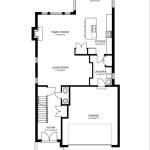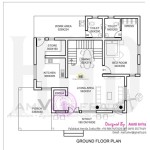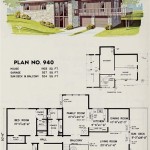A Floor Plan of a House: Essential Aspects
A floor plan is a diagram that shows the layout of a building, including the arrangement of rooms, doors, windows, and other features. Floor plans are used for a variety of purposes, including design, construction, and renovation. They can also be used to help people visualize the layout of a space and to make decisions about furniture placement and traffic flow.
There are many different types of floor plans, but they all typically include the following information:
- The overall shape and size of the building
- The location of rooms, doors, and windows
- The dimensions of each room
- The location of stairs and other vertical circulation
- The location of plumbing and electrical fixtures
Floor plans can be created using a variety of software programs, or they can be drawn by hand. It is important to create a floor plan that is accurate and to scale, as this will help to ensure that the building is constructed correctly.
Essential Aspects of a Floor Plan
There are a number of essential aspects that should be considered when creating a floor plan. These include:
- Function: The floor plan should be designed to meet the needs of the people who will be using the space. This means considering how the space will be used, how people will move through it, and what activities will take place in each room.
- Flow: The floor plan should create a smooth flow of traffic throughout the space. This means avoiding dead-end hallways, cramped rooms, and other obstacles that can make it difficult to move around.
- Privacy: The floor plan should provide privacy for the people who will be using the space. This means creating private spaces for bedrooms, bathrooms, and other areas where people need to be able to relax and feel comfortable.
- Safety: The floor plan should be designed to be safe for the people who will be using the space. This means avoiding hazards such as sharp corners, slippery floors, and other obstacles that could cause injury.
- Aesthetics: The floor plan should be aesthetically pleasing to the people who will be using the space. This means creating a visually appealing layout that is both functional and beautiful.
By considering these essential aspects, you can create a floor plan that meets the needs of the people who will be using the space and that is both functional and beautiful.

Floor Plans Types Symbols Examples

House Plans How To Design Your Home Plan

Top Tips For Choosing A Floor Plan Your New Home

Small House Design 2024005 Pinoy Eplans Modern Plans Layout

Living Options Webster House

Home Floor Plans House Plan Drawings

Peach Tree House Plan Ranch Floor Designs

House Plans How To Design Your Home Plan

Small House Plan Ideas For Diffe Area To See More Read It Floor Plans

How To Read A Floor Plan With Dimensions Houseplans Blog Com








